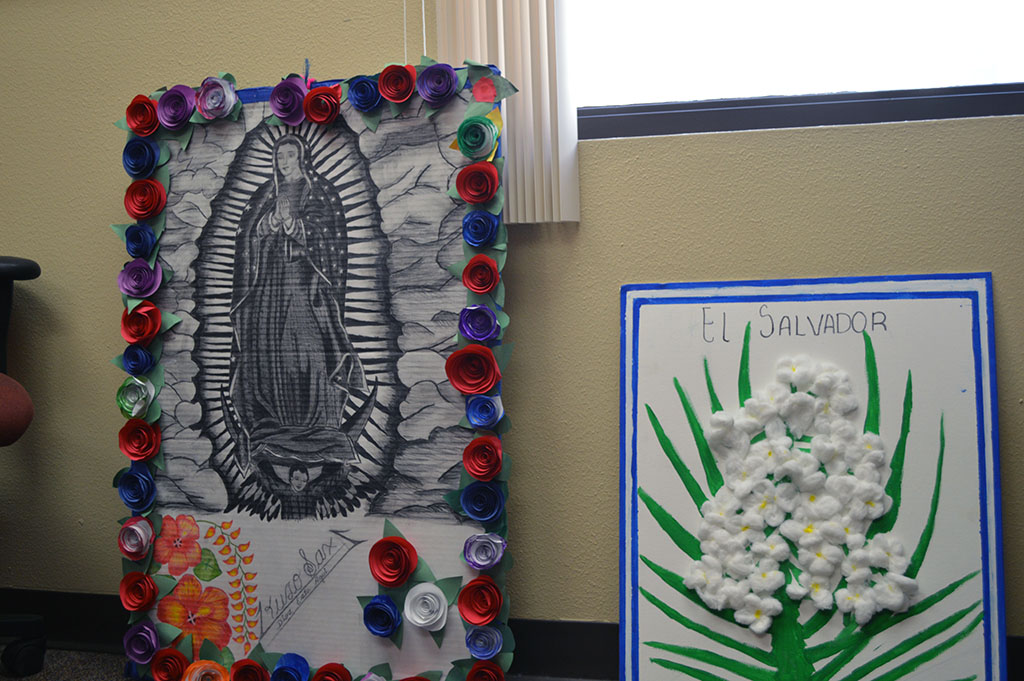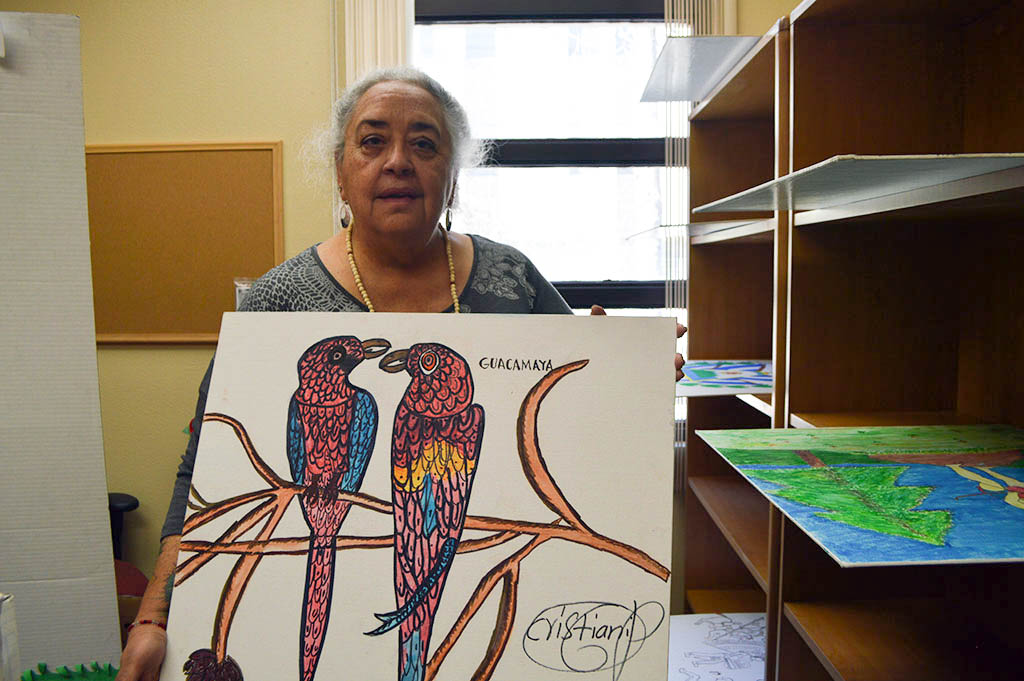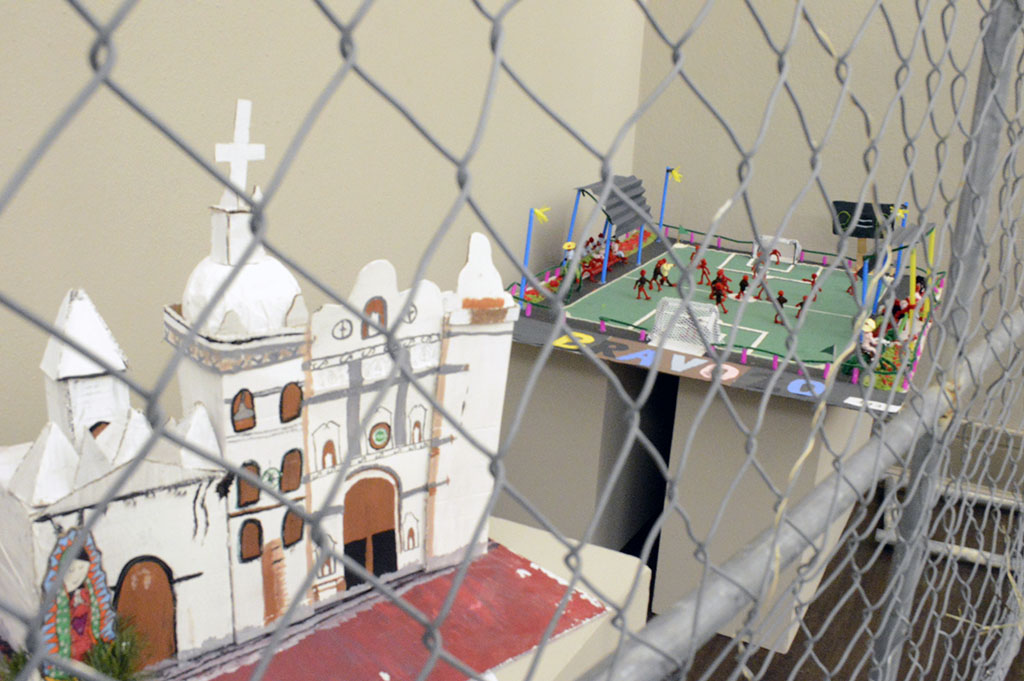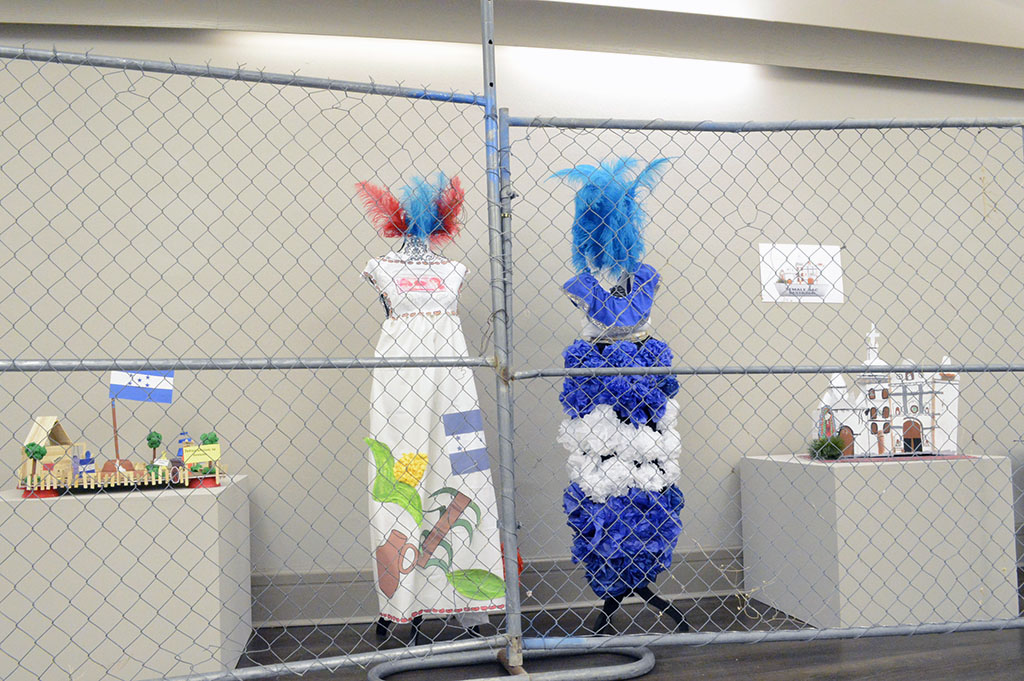Originally published at Borderzine
By Ana Herrera | Borderzine.com
EL PASO, TEXAS — The experiences of migrant children detained in a Texas tent city are on display at a rare exhibit of their art at UT El Paso’s Centennial Museum.
Among the pieces the students created was a white Catholic church made of construction paper, popsicle sticks and yarn. Other students created dresses made of cloth with depictions of their homeland.
Tornillo’s detention center, also known as the Tornillo tent city, opened June 14, 2018, and it came to symbolize the mass detention of migrant children under the Trump administration. Over the eight months of its operation. 6,200 children were held in tents in the small border town on the eastern edge of El Paso County. By the time the temporary facility closed in January 2019, it held at its peak 2,800 Latin-American children, mostly boys, between the ages of 13 to 17 years old.


Art pieces created by Tornillo tent city detainees will be on display at the UTEP Centennial Museum. (Photo by Ana Herrera)
Before the closing of the Tornillo facility, a group of teachers visited the youngsters as part of a social studies class. The kids were asked to represent pride in their homeland through art. This project resulted in the production of 200 pieces of art that were created over a period of four days.
“You can see a lot of talent in the kids,” said Yolanda Leyva, associate professor of history at The University of Texas at El Paso. “They didn’t have that many supplies. It’s all made out of construction paper, pipe cleaners and paint.”


Yolanda Leyva, associate professor of history at the University of Texas as El Paso shows some the art created by migrant children detained in Tornillo. (Photo by Ana Herrera)
Most of the youth detained at the tent city came from El Salvador, Guatemala and Honduras. For this reason, there are a lot of national symbols from those countries represented in their art. The Quetzal bird is the Guatemalan national bird and can be found in several of the art pieces. There are also flags and churches represented in most of the projects.


Artwork made by students detained at a tent city in Tornillo in 2018 is being displayed at UTEP’s Centennial Museum behind a chain-link fence to mimic the children’s living conditions. (Photo by Ana Herrera)
When the Tornillo detention center closed, officials planned to throw the art away. But Father Rafael Garcia from Sacred Heart was able to recover 29 out of the 200 pieces of art and donate them to the UTEP Centennial Museum.
“When I received the call, I said ‘yes’ because to me it is a way to hear the voice of the kids through their art. We are the only ones that have anything like this and I don’t know if that would happen again, the possibility to get access to this type of art,” Leyva said.
The youngsters’ art is the focus of the exhibition “Uncaged Art” that opened at the museum April 13. The museum divided Uncaged Art into two exhibits. The first one will present the story of the detention camps in the United States. The second, will showcase the art created by the youth.


The exhibition, Uncaged Art at the Centennial Museum, will feature art created by youngsters who were being held at the Tent City in Tornillo. (Photo by Ana Herrera)
“People will walk into a plastic tent, similar to the one that that was out in Tornillo, we are also going to have fencing in front of the art. We want to create this feeling of being caged and being imprisoned in this system,” said Daniel Carey-Whalen Centennial Museum director.
For this project, the museum worked with UTEP’s theater and the dance department to creating the tent scene. They are also partnering with local art group Los Dos, who created Quetzal birds that will be flying across the room.
“To create a complete experience, we want people to be able to feel what is like to go out of the tent, so they can see the art as being uplifting. That freedom is represented through the Quetzal birds that will be flying in the room, because like the birds the kids were able to free out of their cage,” Leyva said.
***



[…] Rafael Garcia, a priest from a local church in Texas, came across the art and was able to salvage 29 out of the 200 pieces created by the kids. He donated the originals to the Centennial Museum at the University of Texas […]